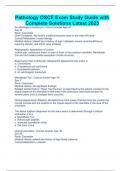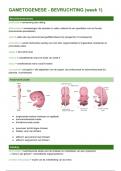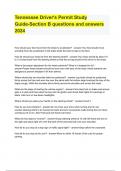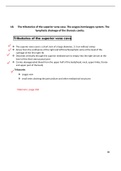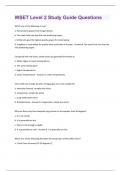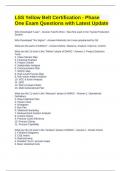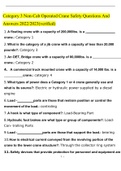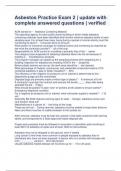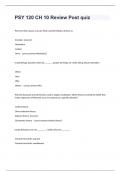Exam (elaborations)
Pathology OSCE Exam Study Guide with Complete Solutions Latest 2023
- Course
- Institution
An odontogenic keratocyst - Correct Answer Age: 63 Sex: M Race: Caucasian Chief Complaint: "My tooth's suddenly become loose in the lower left area." Current Medication: Insulin therapy Medical History: patient has a history of type I diabetes, severe renal insufficiency requiring dialysis, an...
[Show more]
